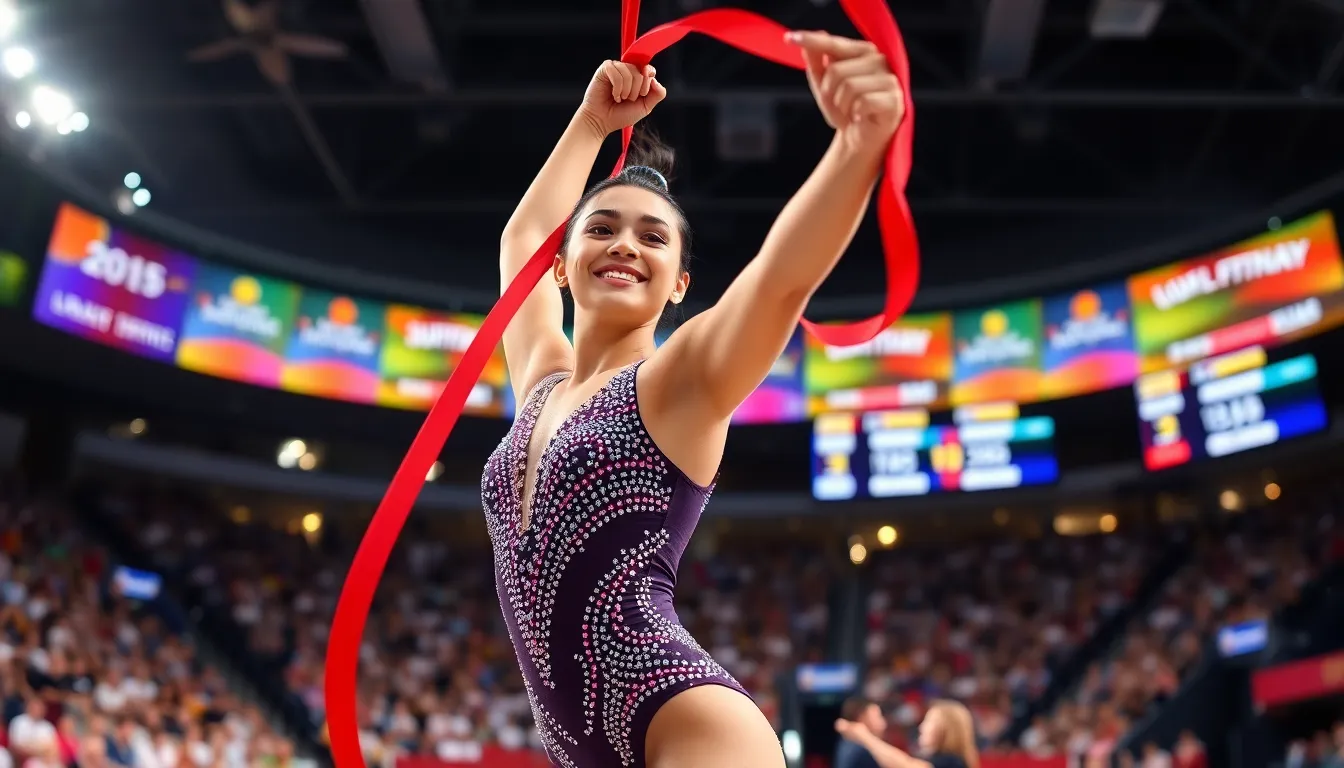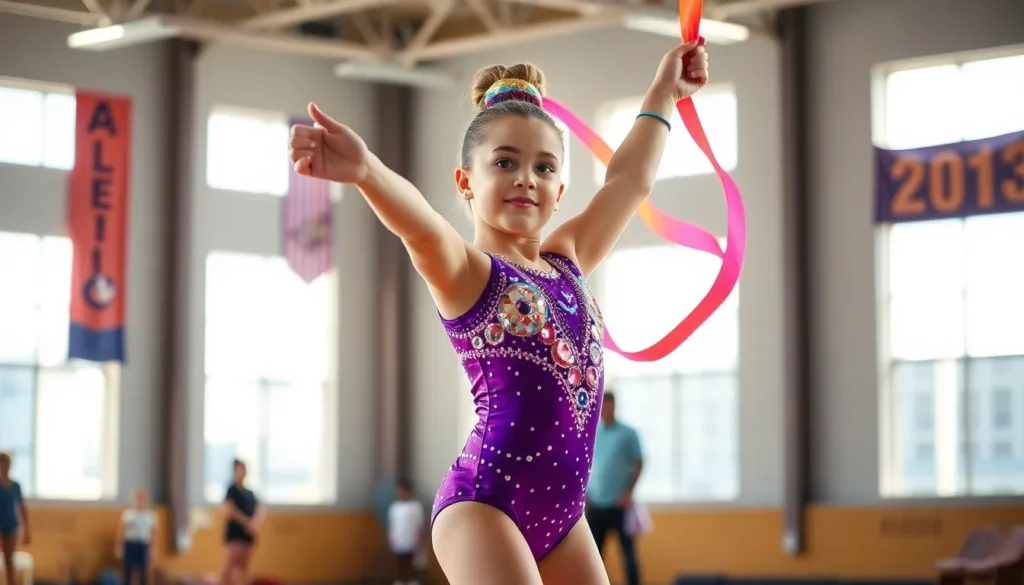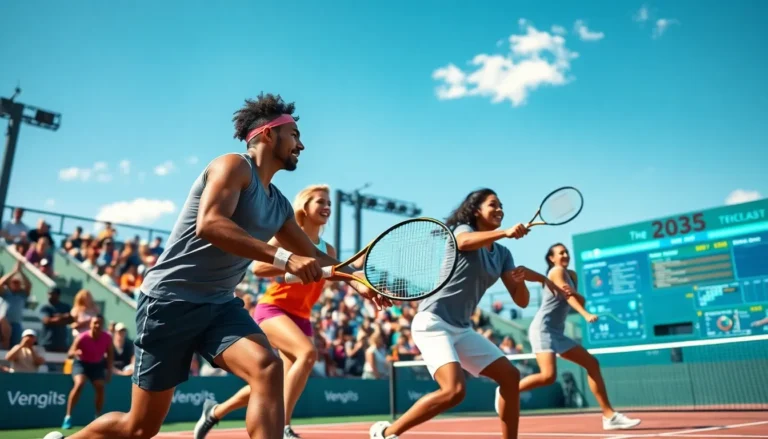Rhythmic gymnastics is a unique blend of athleticism, grace, and artistry that captivates audiences worldwide. As one of the most mesmerizing disciplines within the Olympic framework, this sport combines elements of gymnastics with dance and the manipulation of apparatus like ribbons, hoops, and balls. This article delves into rhythmic gymnastics, exploring its history, recent trends, and the athletes who inspire the next generation of performers.
Table of Contents
ToggleOverview of Rhythmic Gymnastics

History and Evolution of the Sport
Rhythmic gymnastics originated in the early 20th century, evolving from various dance forms and the artistic aspects of gymnastics. Initially, it was showcased in schools across Europe, but soon gained popularity on an international stage. By 1963, rhythmic gymnastics became a competitive sport and was included in the World Championships. The sport made its Olympic debut in 1984, solidifying its status as a premier discipline within the gymnastics community. Over the years, it has transformed significantly, incorporating elements from contemporary dance and even modern circus acts.
Key Elements and Techniques
Rhythmic gymnastics is unique, combining artistry and athletic performance. Competitors use various apparatus, hoops, balls, clubs, ribbons, and ropes, each demanding a high level of skill and finesse. The routines are judged on artistry, execution, difficulty, and overall impression, making creativity as important as technical prowess. Athletes often perform routines set to music, blending fluid movements with precise techniques, highlighting the sport’s aesthetic appeal.
Recent Trends and Developments
In recent years, rhythmic gymnastics has seen significant changes driven by a push for innovation and inclusivity. A notable trend is the increasing emphasis on choreography that reflects diverse cultural influences, expanding beyond traditional classical music to incorporate contemporary genres.
Also, the sport has witnessed a rise in technology integration, including video analysis tools that help athletes refine their techniques and performances. This analysis not only aids in judging consistency but also supports training regimens, allowing coaches to provide better feedback to their gymnasts. Social media has further bolstered the visibility of the sport, with platforms like Instagram and TikTok showcasing routines, fostering a new generation of fans and aspiring gymnasts.
Major Competitions in Rhythmic Gymnastics
Notable Athletes and Their Achievements
The list of prominent rhythmic gymnasts is both illustrious and inspiring. Athletes like Yana Kudryavtseva, who dominated the sport with multiple World Championship titles, and Margarita Mamun, known for her artistic expression and technical skills, have elevated the discipline. They have set a benchmark for excellence, inspiring younger athletes to strive for greatness.
Besides, the recent success of gymnasts like Dina and Arina Averina showcases a new wave of talent that continues to break records in the sport. Their unique styles and exceptional routines have garnered international accolades and adoration.
Upcoming Talent to Watch
As the sport continues to prepare for future competitions, several young gymnasts are making their mark. Athletes such as Lala Jamali and Nikita Guliayev have shown immense promise, making waves in national competitions with innovative performances that meld technical precision with artistic flair. These upcoming talents represent the future of rhythmic gymnastics, bringing fresh perspectives and creativity to the tradition-laden sport.
The Impact of Technology and Training Innovations
Technology has revolutionized training methodologies in rhythmic gymnastics. From performance analytics systems to wearable fitness trackers, modern athletes have access to tools that enhance their training and performance. Coaches leverage video feedback to analyze each routine’s intricacies, allowing for precise adjustments and improvements.
Also, advancements in virtual training aids and online coaching have made it possible for athletes to receive high-quality instruction from around the globe, breaking geographical barriers. This accessibility allows promising athletes to hone their skills, regardless of their location.
Challenges in the World of Rhythmic Gymnastics
Even though its beauty and grace, rhythmic gymnastics faces several challenges. One major issue is the physical and psychological pressures athletes endure, stemming from rigorous training and competition schedules. The intense desire for perfection can lead to burnout and emotional stress, which is often overlooked in high-performing sports.
Also, there are ongoing discussions about the need for fairness in judging, particularly with the subjective nature of artistic scores. Calls for more transparent criteria in judging could help drive improvements and foster greater trust in the competition process. Besides, as the sport evolves with new elements and trends, maintaining a balance between tradition and innovation remains a delicate challenge.
Conclusion
Rhythmic gymnastics is more than just a sport: it is a celebration of artistry, strength, and discipline. As it continues to evolve, embracing new technologies and trends, the sport remains a captivating spectacle that draws fans and aspiring gymnasts worldwide. By nurturing upcoming talents and addressing ongoing challenges, rhythmic gymnastics can look forward to a bright future, enriching the athletic landscape for generations to come.








